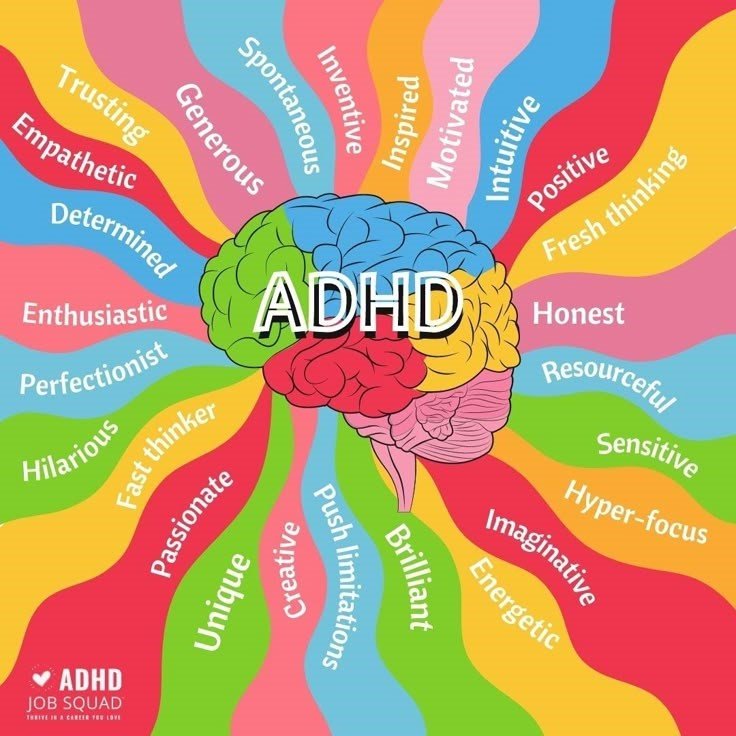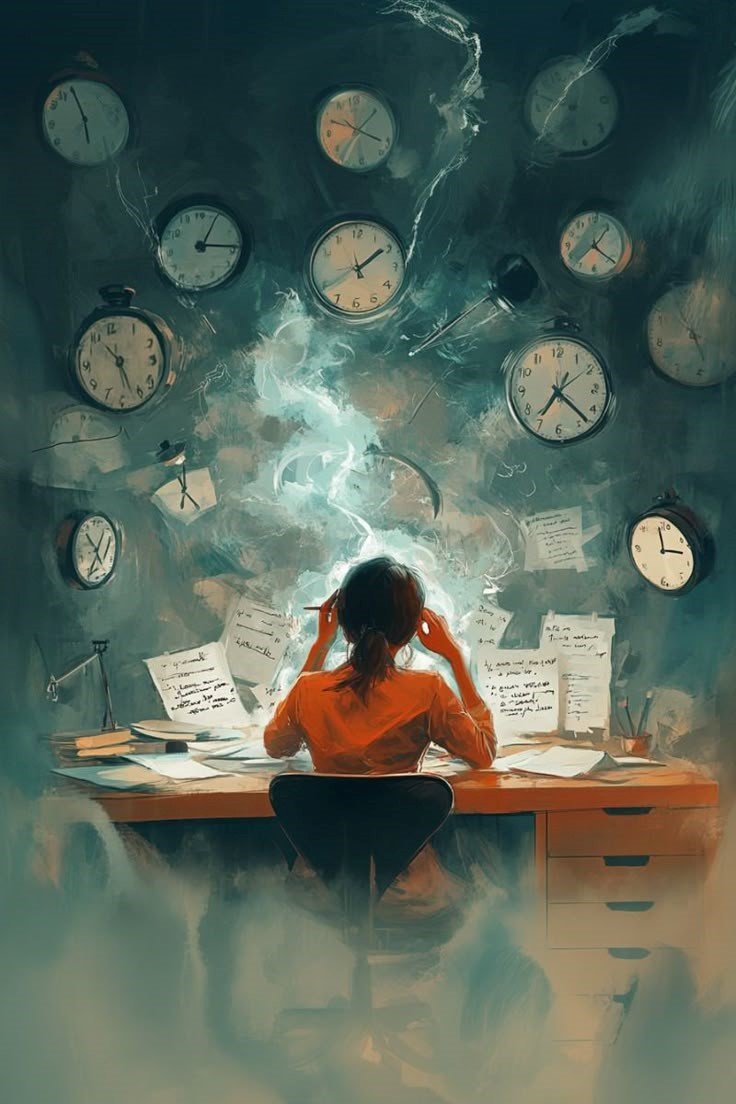What Is an ADHD Person Like
Honestly, I used to chalk up my missed deadlines to plain laziness—until my doctor said, “You have ADHD.” In that single moment, the puzzle pieces snapped together. About 10 % of U.S. adults—roughly 8.7 million people—live with ADHD, yet the myths keep rolling on. Is it just poor self-discipline? A lack of ambition? Not even close. ADHD is a brain-based difference that reshuffles focus, emotion, and planning in ways most people never see. So let’s step inside the ADHD mind and explore what life with this condition really feels like, beyond every stereotype you’ve heard.

Why Do We Need to Talk About What ADHD Really Feels Like?
Why talk about what ADHD really feels like? Because myths hurt real people every day. Roughly 15 million U.S. adults—about 6 percent—live with ADHD. Reuters Yet many still hear, “You’re just lazy.”
ADHD isn’t a character flaw. It’s a brain-based difference that changes how we focus, plan, and handle big feelings. Here are three myths I tackle with new clients all the time:
- Myth 1: “Try harder.”
Truth: The ADHD brain processes time and detail in a unique way. Effort alone isn’t the fix. - Myth 2: “You’re over-reacting.”
Truth: Emotional swings (called dysregulation) are a core symptom, not drama. - Myth 3: “ADHD is a child problem.”
Truth: Most adults with ADHD were diagnosed after 18.
Take my client Sarah. Deadlines blew past her like speeding cars, and people called her “irresponsible.” Once she learned these slip-ups were ADHD traits—not personal failure—her confidence soared. With timers, bite-size tasks, and a weekly check-in, Sarah now hits projects on time and feels proud of her brain’s quirks.
Core Traits of ADHD: What Defines an ADHD Person?
When people ask me, “What is an ADHD person like?” I always start with the core traits because understanding these is the foundation to appreciating how ADHD impacts daily life. ADHD isn’t one thing; it’s a combination of several neurobehavioral patterns that vary widely from person to person.

Inattention vs. Hyperactivity: The Classic Duo
Most of us know ADHD is often split into two main types of symptoms:
- Inattention: Difficulty sustaining focus, easily distracted, forgetfulness, and trouble following through on tasks. For example, someone might start writing an email, get distracted by a notification, and then forget they were even going to send that email.
- Hyperactivity-Impulsivity: Restlessness, fidgeting, interrupting others, or feeling like you constantly need to move. This can look very different in adults versus children, adults may feel more internal restlessness, whereas kids might literally run around the room.
But here’s the kicker: many people don’t realize that ADHD often includes a mix of these symptoms, and some people predominantly have one type (like inattentive ADHD) which can make diagnosis trickier.
Emotional Dysregulation: The Hidden Challenge
One of the most misunderstood ADHD symptoms is emotional dysregulation, the difficulty in managing emotions. This is not just being “moody” but having intense feelings that come on suddenly and can be hard to control. Think of it as emotional “overwhelm” or quick shifts from happiness to frustration or anxiety.
Many adults with ADHD experience Rejection Sensitive Dysphoria (RSD), a heightened sensitivity to perceived criticism or rejection that can feel unbearable. This aspect deeply affects relationships and self-esteem.
Executive Dysfunction: The Brain’s “Control Center” Misfires
Executive functions are the mental skills needed to plan, organize, start tasks, regulate time, and manage emotions. In ADHD, this “control center” can be underactive or inconsistent.
- Time blindness: Losing track of time or underestimating how long tasks take.
- Task paralysis: Feeling overwhelmed and stuck, unable to start or complete tasks.
- Forgetfulness: Missing appointments, losing items, or forgetting important steps.
I often tell clients, “It’s like your brain’s GPS is recalculating all the time.” This makes everyday things like paying bills on time or keeping a calendar a major challenge.
Daily Life with ADHD: Real Challenges Behind the Traits
Living with ADHD is more than just the symptoms, it’s about how those symptoms ripple into everyday moments, sometimes in frustrating and surprising ways. I’ve coached dozens of adults who say, “I know I have ADHD, but it’s the daily stuff that really gets me.”
Work and Productivity: The Battle with Focus and Time
Picture this: Sarah (not her real name) is a talented graphic designer in California. She’s creative and passionate but struggles with ADHD procrastination and time blindness. She often underestimates how long projects take, which leads to last-minute rushes and missed deadlines. Her ADHD impulsivity also makes it hard to stick to one idea, she’ll jump from concept to concept, leaving many half-finished designs.
What helped Sarah was breaking her work into tiny, manageable chunks and using timers (the Pomodoro technique is a classic!). We also built a habit of daily check-ins to keep her accountable and celebrate progress. Small wins added up, and she began to see herself as a reliable professional instead of “the flaky one.”

Relationships: Navigating Emotional Overload and Communication
ADHD social challenges often revolve around emotional dysregulation and impulsivity. I remember a client named James who felt overwhelmed by frequent misunderstandings with his partner. His intense reactions, driven by Rejection Sensitive Dysphoria (RSD), led to conflict over minor issues.
We worked on recognizing emotional triggers and practicing mindfulness during heated moments. James learned to pause, breathe, and communicate his feelings instead of reacting impulsively. His relationship grew stronger, and he felt less isolated in his struggles.
Self-Care and Daily Organization: The Forgotten Essentials
Many adults with ADHD report difficulties with routine tasks, paying bills, remembering appointments, or even basic self-care like meals and sleep. ADHD forgetfulness can feel like your brain is leaking information (frustratingly common!).
One client, Mia, used a combination of visual reminders (sticky notes around the house), smartphone apps for scheduling, and “anchor habits”, routines linked to existing habits like brushing teeth, to create a safety net for daily tasks.
Strengths of ADHD: Embracing Creativity, Resilience, and Hyperfocus
You know, one of the most important things I’ve learned as an ADHD coach is this: ADHD is a double-edged sword. Yes, it challenges daily life, but it also gifts many adults with incredible strengths that, when recognized and nurtured, can be game changers.
Creativity and Outside-the-Box Thinking
Many of my clients report a vivid imagination and creative spark that others envy. ADHD brains tend to make connections quickly and uniquely, often seeing patterns or solutions that neurotypical minds might miss. For example, a client named Alex, an engineer, shared how his ADHD helped him innovate at work because he could think divergently, generating ideas that no one else thought of.
Hyperfocus: The Unexpected Superpower
Now, hyperfocus is one of those paradoxical ADHD traits that people outside the community often misunderstand. It’s not just about being distracted; sometimes, people with ADHD can focus intensely on something they find stimulating, for hours on end. This can be a huge advantage if channeled well.
Take Emma, who struggled with distractibility in daily tasks but could hyperfocus on learning new coding skills. That intense immersion allowed her to switch careers successfully.
Resilience and Adaptability
Living with ADHD means developing resilience, sometimes without even realizing it. Constantly navigating a world designed for neurotypical brains builds incredible adaptability. Many adults with ADHD develop a strong sense of perseverance, humor in the face of setbacks, and an ability to pivot quickly.
FAQ: Common Questions About ADHD and What It Really Means
Is ADHD a Disability?
This is a question I hear a lot, and honestly, it depends on context. ADHD is recognized as a neurodevelopmental disorder by the DSM-5, which qualifies it as a disability under many laws, including the ADA in the U.S. That means people with ADHD can be eligible for accommodations in work or school.
But, and this is important, having ADHD doesn’t mean you’re “broken” or incapable. It means your brain works differently, with unique challenges and strengths. It’s about understanding how ADHD affects you personally and finding strategies that fit your brain’s wiring.
Can ADHD Be Managed?
Absolutely yes! While ADHD is a lifelong condition, it can be managed effectively with the right tools and support. This often includes a combination of coaching, therapy, medication (for some), and lifestyle adjustments like structure, routines, and mindfulness practices.
In coaching sessions, I help clients identify practical strategies that fit their lives and brain chemistry, because what works for one person may not for another.
What Does ADHD Feel Like?
This one is so important, because ADHD is invisible, it can feel isolating. Many describe it as having a brain that’s constantly “on,” jumping between thoughts, emotions, and impulses. There’s a sense of overwhelm, frustration, and sometimes guilt about things that seem easy for others but hard for you.
I often say, living with ADHD is like trying to herd cats inside your mind while someone’s shouting at you to focus. It’s exhausting but also deeply human.
How Does ADHD Affect Relationships?
ADHD can impact communication, emotional regulation, and social cues. People with ADHD might interrupt, forget commitments, or struggle to read subtle social signals, sometimes leading to misunderstandings or hurt feelings.
But, with awareness and coaching, relationships can improve dramatically. Teaching emotional regulation and communication strategies often helps partners and families connect better.
Take Control of Your ADHD Journey Today
Living with ADHD can feel overwhelming, but remember, you are not alone, and help is available. Whether you’re newly diagnosed or have been navigating ADHD for years, there’s always a way forward.
Here’s what you can do next:
- Seek professional support: Consider coaching, therapy, or a medical evaluation to tailor a plan that fits your unique brain.
- Build a routine: Start small by organizing your day with simple, consistent habits that reduce chaos.
- Educate yourself: The more you understand ADHD, the more empowered you become to manage it.
- Join a community: Connecting with others who share your experiences can provide invaluable support and encouragement.
If you want personalized guidance, I’m here to help. Together, we can develop strategies to harness your strengths, overcome challenges, and thrive.
Ready to take the first step? Contact me for a free consultation or learn more about my coaching programs tailored for adults with ADHD.
